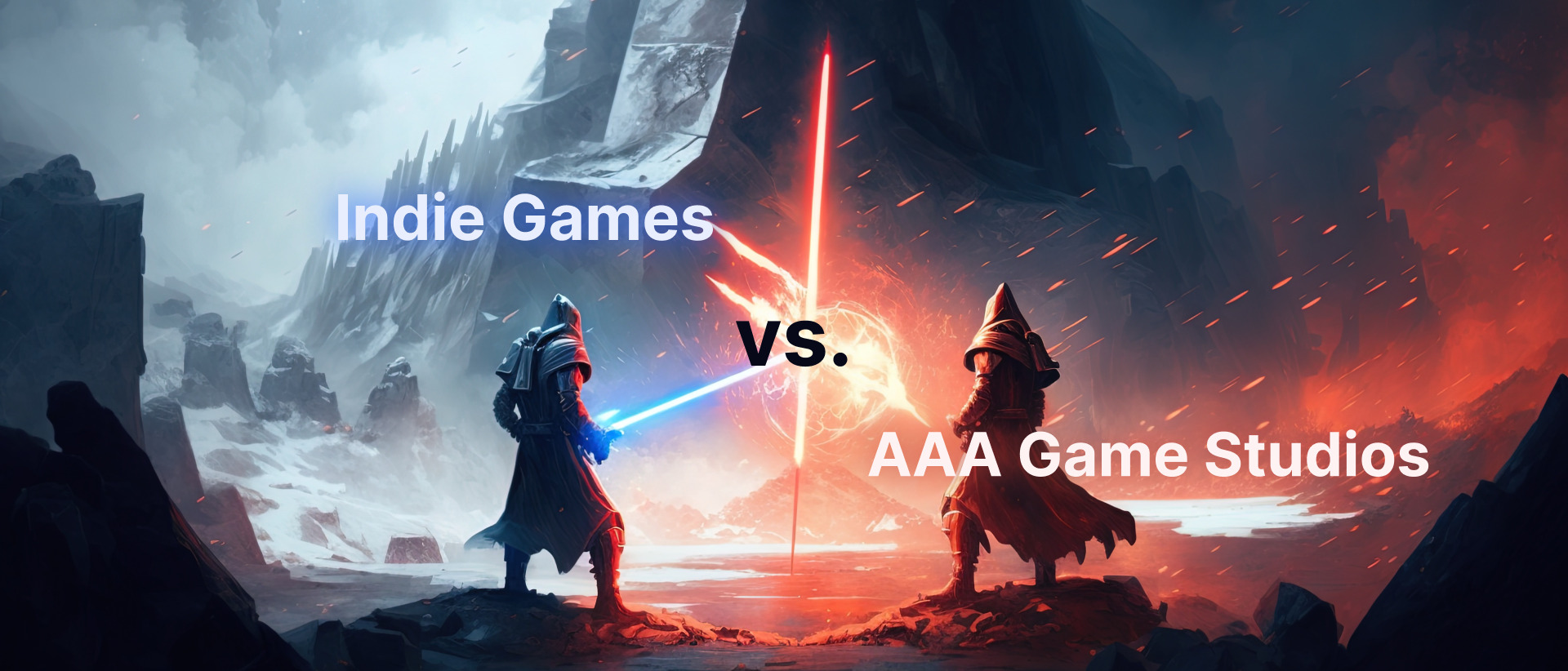
How to Become a Successful Indie Game Developer: Insights and Steps
Indie games often stand out because they bring something different to the table.
If you love games and have always wanted to make your own, becoming an indie game developer could be a great path for you. And knowing you're here, it sounds like you are ready to put your own twist on the gaming world, creating games that are as fun to make as they are to play!
Before we guide you through the steps on how to become a successful indie game developer, let’s talk about definition.
What is an Indie Game?
An indie game – short for independent game – is a video game typically developed by individuals or smaller development teams without the financial support of a large publisher. These games often emphasize innovation, creativity, and a personal touch.
Because they aren’t tied to the typical constraints of larger game studios, indie games have a more diverse themes and game mechanics, often blending genres or breaking traditional gaming conventions. This often leads to games that challenge players’ expectations and offer new kinds of interactive experiences.
In simple words, an indie game is a game created by small teams or individuals without big publisher support
And without the financial backing of major publishers, who often stick to big-budget games and avoid risks, indie developers are freer to experiment. This means indie developers can try out new and unique ideas that might not happen in bigger companies.

In 2023, indie game development and AAA studio production showcased their distinctive roles within the gaming industry. Small independent (indie) game studios dominated Steam, accounting for about 99 percent of releases, which amounted to roughly 13,790 titles.
So what makes indie game development different from AAA studios?
| Aspects | Indie Game Development | AAA Studio Productions |
|---|---|---|
| Budget | Typically operates on a smaller budget, often funded by personal savings, crowdfunding, or indie publishers. | Large budgets backed by major publishers, allowing for high production values. |
| Team Size | Small teams ranging from a single individual to a few dozen members. | Large teams consisting of hundreds of professionals across various specializations. |
| Creative Control | High degree of creative freedom, allowing for experimentation with new ideas and mechanics. | Creative decisions are often influenced by market research and profitability concerns. |
| Development Time | Can vary greatly; some games are developed quickly due to fewer complexities, others may take longer. | Typically longer development cycles due to scale and complexity of projects. |
| Game Scope | Often more focused and niche, with innovative or experimental gameplay elements. | Broad appeal to ensure large market reach; often focused on proven formulas. |
| Marketing | Smaller, community-focused marketing efforts. Sometimes reliant on viral marketing or grassroots movements. | Extensive marketing campaigns with significant budgets to ensure high visibility. |
| Distribution | Typically digital distribution on platforms like Steam, itch.io, or direct sales from developers' websites. | Wide distribution, including both digital and physical retail presence globally. |
| Risk Taking | More likely to take risks and develop niche content due to lower financial stakes. | Risk-averse; tends to stick to successful genres and sequels to maximize profits. |
| Player Interaction | Direct interaction with players through forums, beta testing, and early access feedback. | Interaction often handled by customer service teams; less direct feedback into development. |
Steps to Becoming a Successful Indie Game Developer
How to make an indie game successful? Making an indie game successful includes a mix of creativity, strategic planning, and community engagement. Here are some key strategies to consider:
| Step 1: Learn the Basics | Before you make a game, you need to understand how games are made. Learning about game design, coding, and art is crucial. You can find tons of tutorials and classes online that can teach you what you need to know. |
| Step 2: Come Up with a Great Idea | What makes your game different? Think about what new or fun element you can bring to the gaming world. Maybe it’s a cool story, a new kind of challenge, or a beautiful art style. |
| Step 3: Make a Plan and Follow Through | Good planning helps turn your game idea into reality. Using tools like Unity or Unreal Engine can help you build your game. Remember, making a game is about trying things out and improving them based on what players say. |
| Step 4: Get the Word Out | As you build your game, start talking about it. Use social media, gaming forums, and early versions of your game to connect with players. This community can provide valuable feedback and support. |
How Do You Get Funding for an Indie Game Development?
Let’s be honest, even a small indie game development needs some funding. In fact, it can be one of the steps to turn a game idea into reality, especially for indie game studios who work without the large budgets of major studios. Here are some common ways indie developers can secure funding for their projects:
| Funding Method | How It Works | Benefits | Drawbacks |
|---|---|---|---|
| Crowdfunding | Developers present their game ideas on platforms like Kickstarter with tiered rewards for backers. |
Engages community early; funds before development. | Can be competitive; no guarantee of meeting goals. |
| Early Access Sales | Release the game in an incomplete state for feedback and funding on platforms like Steam Early Access. | Immediate funding; valuable player feedback. | Pressure to update regularly; player expectations. |
| Patronage and Subscriptions | Use platforms like Patreon where fans subscribe to support development in exchange for exclusive content. | Steady income stream; builds community. | Requires regular content updates; slow funding growth. |
| Government Grants | Apply for funding from programs supporting arts and innovation. | Non-repayable; supports creative freedom. | Competitive; limited availability. |
| Game Incubator Programs | Programs that provide funding, mentoring, and resources to help developers bring their game to market. | Expert guidance; networking opportunities.. | Often highly competitive; may require equity or revenue share. |
| Personal Savings | Use personal funds to finance the development, commonly known as bootstrapping. | Full creative control; no external pressures. | High financial risk; limited budget. |
Thatgamecompany and Their Game, Sky: Children of the Light is one of the most successful Indie Games
Thatgamecompany is a standout example of what indie developers can achieve with creativity and innovation. Their game, Sky: Children of the Light, is known as an “open world social indie adventure game,” which means it’s all about social interaction in a game where players can explore wherever they want.
The game really shows off what makes indie games special. Unlike many big-budget AAA games that focus a lot on flashy graphics and reaching as many players as possible, Sky: Children of the Light takes a different path.
It’s all about telling a moving story and bringing players together to share in those emotional moments. This approach gives players a truly unique and connecting experience, something that sticks with them.
Ready to bring your indie game vision to life?
At Devoted Studios, we're here to help every step of the way. From initial concept development to final polish and launch, our Game Development service provides the expertise, resources, and support you need to make your game a standout success. Don't go it alone—join forces with Devoted Studios and let's create something incredible together. Contact us today and start your journey in the world of indie game development!
